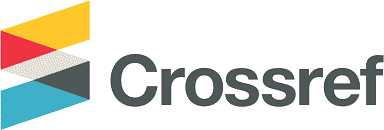Journal of Materials Exploration and Findings
Abstract
Hydrocarbon releases might result in serious consequences in various aspects. In addition to the contribution to environmental pollution, repetitive leakages need high repair costs. This study aim is to minimize potential repetitive leakage for other typical 3-phase piping systems. We conducted the risk assessment by adopting Risk Based Inspection (RBI) API 581 to identify risk level, calculating piping lifetime, recommended inspection plan and mitigations. The most relevant root causes can be obtained through quantitative Fault Tree Analysis (FTA). Observation and investigation was taken from eight 3-phase piping systems that experienced repetitive leakages. It has been found that the risk level of some piping systems in yellow and red areas with one pipe in an unfit condition. Next inspection and/or mitigation dates as results of RBI calculation shall be conducted to reduce risk levels and prevent leakage cases. FTA shows the most likely events are the sand problem in fluid, high CO2 content, material deficiency, and high fluid velocity. If the root causes are known earlier, preventive mitigation can be conducted to prevent hydrocarbon release in the other 3-phase piping systems, such as application of internal coating, injection corrosion inhibitor or inspection/monitoring program.
References
Ikwan, F, Sanders, D & Hassan, M 2021, ‘Safety evaluation of leak in a storage tank using fault tree analysis and risk matrix analysis’, Journal of Loss Prevention in the Process Industries, 73, pp.1-9.
Hartoyo, F, Fatriansyah, J F, Mas'ud, I A, Digita, F R, Ovelia, H & Asral, D R 2022, ‘The optimization of failure risk estimation on the uniform corrosion rate with a non-linear function’, Journal of Materials Exploration and Findings (JMEF), 1(1), p.1-9.
Ni, H, Chen, A & Chen, N 2010, ‘Some extensions on risk matrix approach’, Safety science, 48(10), pp.1269-1278.
Papazoglou, I A, Aneziris, O N, Post, J G & Ale, B J M 2002, ‘Technical modeling in integrated risk assessment of chemical installations’, Journal of Loss Prevention in the Process Industries, 15(6), pp.545-554.
Vinnem, J E & Røed, W 2015, ‘Root causes of hydrocarbon leaks on offshore petroleum installations’, Journal of Loss Prevention in the Process Industries, 36, pp.54-62.
Wang, J & Li, L 2022, ‘Reliability Analysis Based on Pipeline Leak Detection’, 4th International Conference on Intelligent Control, Measurement and Signal Processing (ICMSP), pp. 280-284.
Fuentes-Bargues, J L, González-Cruz, M C, González-Gaya, C & Baixauli-Pérez, M P 2017, ‘Risk analysis of a fuel storage terminal using HAZOP and FTA’, International Journal of Environmental research and public health, 14(7), pp.1-26.
Zhao, L, Yan, Y, Wang, P & Yan, X 2019, ‘A risk analysis model for underground gas storage well integrity failure’, Journal of Loss Prevention in the Process Industries, 62, pp.1-18.
Lubis, M O Z A, Widodo, A & Haryadi, G D 2018, ‘Risk Assessment of Gas Pipeline using Risk Based Inspection and Fault Tree Analysis’, Proceedings of the 7th Engineering International Conference on Education, Concept and Application on Green Technology, pp.43-47.
Edmondson, N 2004, ‘Results from a four-year regulatory campaign to reduce offshore hydrocarbon releases’, Seventh SPE International Conference on Health, Safety, and the Environment in Oil and Gas Exploration and Production, SPE-86599-MS, pp.29-31.
Operation and Surface Facilities Team 2022, PHE ONWJ Software Development: ONWJ RBI Calculation & Assessment (ORCA) Manual Handbook, 1st rev, Jakarta.
Zhang, P, Qin, G & Wang, Y 2019, ‘Risk Assessment System for Oil and Gas Pipelines Laid in One Ditch Based on Quantitative Risk Analysis’, Energies, 12(6), pp.1-21.
Fu, S, Ya, X, Zhang, D, Li, C & Zio, E 2016, ‘Framework for the quantitative assessment of the risk of leakage from LNG-fueled vessels by an event tree-CFD’, Journal of Loss Prevention in the Process Industries, 43, pp.42-52.
Surface Facilities Team 2022, RBI Topside Methodology, 1st rev, Jakarta.
Kongsvik, T, Johnsen, S Å K, & Sklet, S 2011, ‘Safety climate and hydrocarbon leaks: An empirical contribution to the leading-lagging indicator discussion’, Journal of Loss Prevention in the Process Industries, 24(4), pp. 405-411.
Dou, Z, Jiang, J C, Wang, Z R, Pan, X H, Shu, C M & Liu, L F 2017, ‘Applications of RBI on leakage risk assessment of direct coal liquefaction process’, Journal of Loss Prevention in the Process Industries, vol. 45, pp. 194-202.
Recommended Citation
Yuliati, Dona; Yuwono, Akhmad Herman; Asral, D. Rizal; and Dhaneswara, Donanta
(2023)
"Combined Risk Based Inspection and Fault Tree Analysis for Repetitive 3-Phase Line Piping Leakage at West Java Offshore Topside Facility,"
Journal of Materials Exploration and Findings: Vol. 2:
Iss.
3, Article 1.
DOI: 10.7454/jmef.v2i3.1034
Available at:
https://scholarhub.ui.ac.id/jmef/vol2/iss3/1
Included in
Chemical Engineering Commons, Chemicals and Drugs Commons, Computational Engineering Commons, Condensed Matter Physics Commons, Fluid Dynamics Commons, Materials Chemistry Commons, Materials Science and Engineering Commons, Mechanical Engineering Commons, Mining Engineering Commons, Natural Products Chemistry and Pharmacognosy Commons, Operations Research, Systems Engineering and Industrial Engineering Commons, Other Engineering Commons, Polymer Chemistry Commons, Risk Analysis Commons, Statistical, Nonlinear, and Soft Matter Physics Commons










